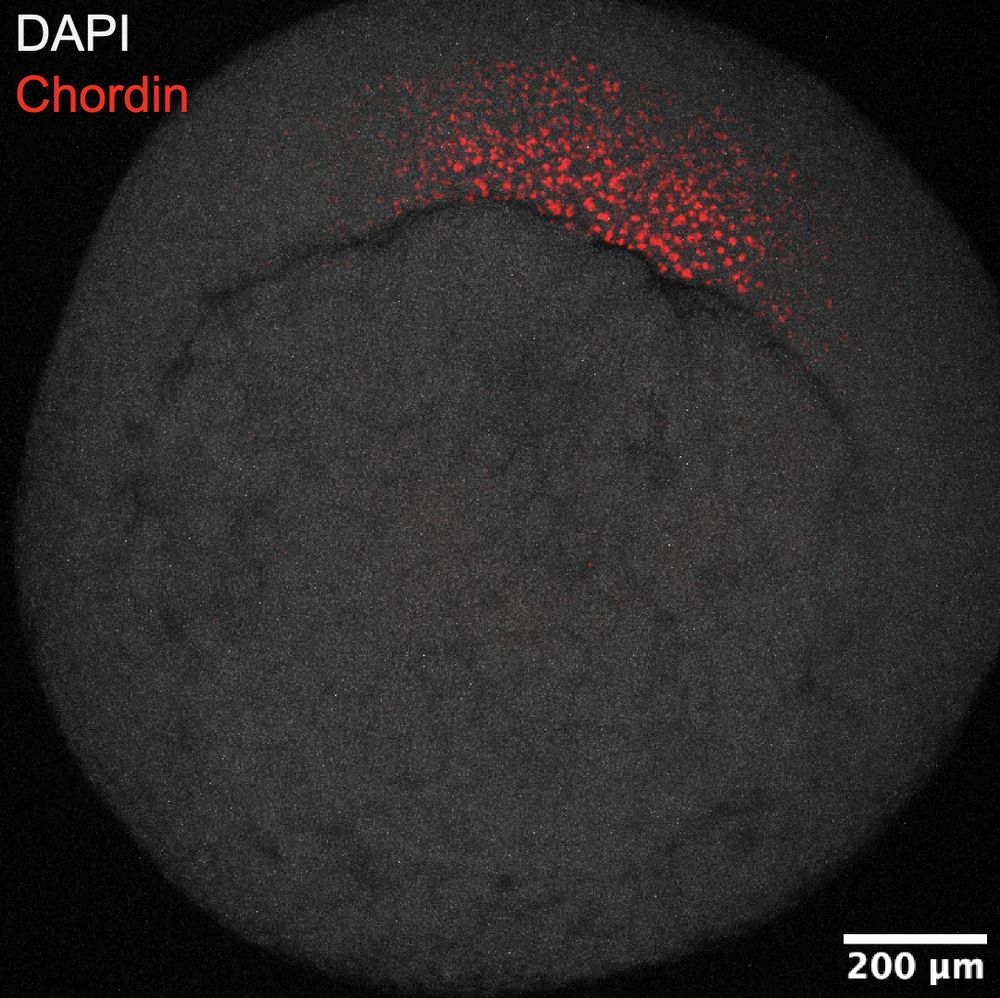
Research Fellow in Mongera lab UCL | PhD in Mayor and Charras labs | YEN Committee
Switching from frogs (which are underrated btw) to zebrafish has really made me appreciate transparent tissues! 🐟
28 hpf, ⚪ nuclei, 🔴 F-actin

Switching from frogs (which are underrated btw) to zebrafish has really made me appreciate transparent tissues! 🐟
28 hpf, ⚪ nuclei, 🔴 F-actin


I was optimising some stainings a couple years ago (this one is Stage 32 with sodium borohydride to reduce autofluorescence). Any #Xenopus people know what the rosette-looking clusters around the eye are doing?
By the way, check out YEN Image Competition #YEN2025 ;)

I was optimising some stainings a couple years ago (this one is Stage 32 with sodium borohydride to reduce autofluorescence). Any #Xenopus people know what the rosette-looking clusters around the eye are doing?
By the way, check out YEN Image Competition #YEN2025 ;)
We see it as a result of a biochemical or mechanical interaction between cells/tissues that leads to a significant change in physical properties in the responding tissue. Actuation happens in parallel to induction and the processes can influence each other.

We see it as a result of a biochemical or mechanical interaction between cells/tissues that leads to a significant change in physical properties in the responding tissue. Actuation happens in parallel to induction and the processes can influence each other.
I reviewed with
@mayorlab.bsky.social 3 excellent papers that show how actuation and feedback can drive changes in the embryo.

I reviewed with
@mayorlab.bsky.social 3 excellent papers that show how actuation and feedback can drive changes in the embryo.
We see it as a result of a biochemical or mechanical interaction between cells/tissues that leads to a significant change in physical properties in the responding tissue. Actuation happens in parallel to induction and the processes can influence each other.

We see it as a result of a biochemical or mechanical interaction between cells/tissues that leads to a significant change in physical properties in the responding tissue. Actuation happens in parallel to induction and the processes can influence each other.

(at least from me)
This fluorescent in situ probe worked much better than I expected. Chordin expression seen here at early gastrula stage of a #xenopus embryo.
(at least from me)
This fluorescent in situ probe worked much better than I expected. Chordin expression seen here at early gastrula stage of a #xenopus embryo.








Some more #Xenopus... This time a #gastruloid formed by treating an explant of blastula presumptive ectoderm cells with Activin.
Nuclei labelled with H2B-mCherry with colour indicating size.

Some more #Xenopus... This time a #gastruloid formed by treating an explant of blastula presumptive ectoderm cells with Activin.
Nuclei labelled with H2B-mCherry with colour indicating size.



